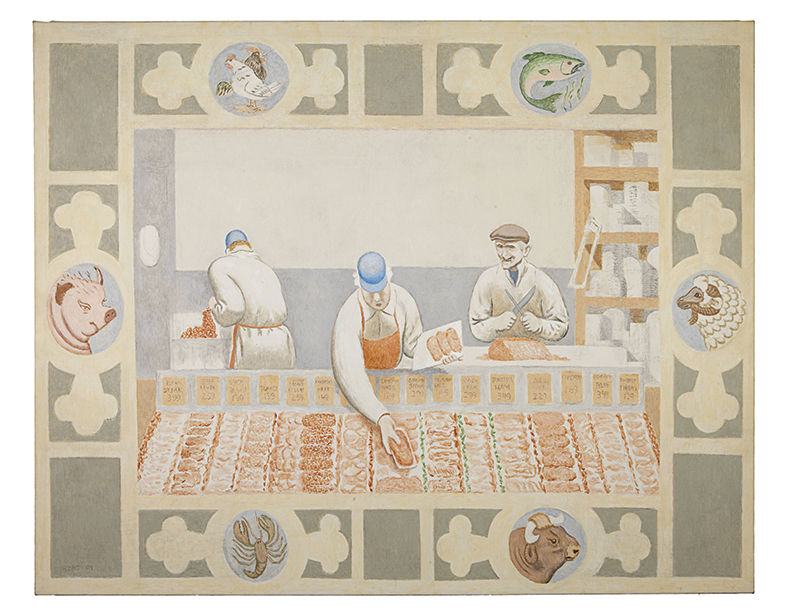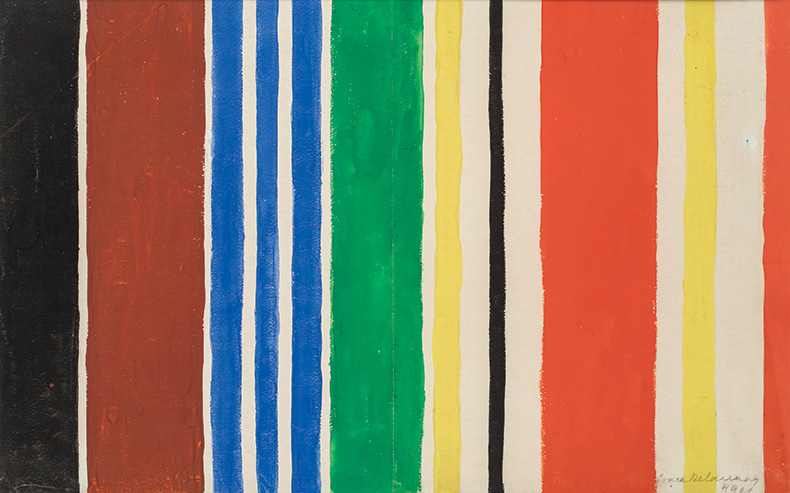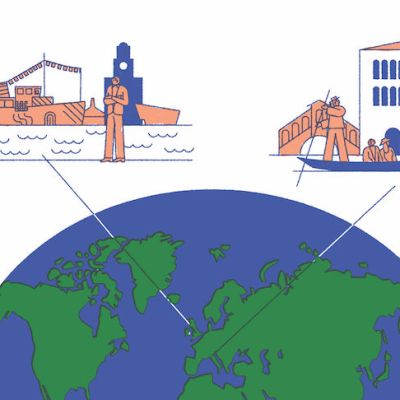From the June 2023 issue of Apollo. Preview and subscribe here.
Since its foundation in 1970, Art Basel has loomed large over the art world. Even in its first year it attracted 16,300 visitors and 110 exhibitors. Attendance in 2019 was 93,000; this month (15–18 June), 284 galleries are showing their wares. But while its size is undeniable, other aspects of the fair are more ambiguous.
Marc Spiegler announced in October last year that he was stepping down as global director of Art Basel. With him went the role of global director – his replacement Noah Horowitz was given the title of chief executive officer. But just before leaving, Spiegler created the role of ‘director of fairs and exhibition platforms’: the man selected for this job was Vincenzo de Bellis.
Corporate upheaval does not necessarily translate into a brand new approach at the leading art fairs, and visitors to Art Basel this year who expect a transformed fair may be disappointed. Indeed, de Bellis strikes a considered tone: ‘Every Art Basel show starts with a cycle of nine to 10 months,’ he says. ‘I joined in August [2022] and was full time in October and, of course, Marc was with us until December.’ He is not about to rip up the Art Basel playbook – after all, as he says, ‘Art Basel is our mothership. It sets the tone, sets the bar. It has a certain degree of tradition but also an incredible degree of experimentation that is very important for the entire art world.’
Art Basel itself was without a fair director until early May and the arrival in post of Maike Cruse won’t take effect until after the 2023 edition, leaving de Bellis as de facto director of this year’s Basel fair as well as its international siblings in Miami Beach and Paris (Angelle Siyang-Le is director of the Hong Kong fair). Like a good guardian, he is keen to make it clear that there is no favourite child – each has their differences and their strengths. ‘Our goal in every show is one only: quality. The best quality possible. But in 2023, the word quality has a different meaning than a few years ago and it can be different from place to place. This is what should and will drive us to find the right balance in the shows to have different character according to the context we are in,’ he says.
Before he began wrapping his head around the similarities and differences between the four Art Basel locations, de Bellis was curator of visual arts at the Walker Art Center in Minneapolis. It might seem odd to see a museum curator swap over to the commercially thrusting world of art fairs but he had spent four years as artistic director of Miart, the Milanese contemporary art fair. When he moved to the Walker in 2016, he joked with Spiegler and Horowitz that the only thing that would tempt him back to a fair would be an invitation from Art Basel.
Museums crop up a lot in his discussion of Art Basel. At one point in our discussion, Art Basel is ‘like a museum without being a museum’; the fair is ‘less intimidating than museums’ – which might be news to people who aren’t invited and have to pay the admission fee; ‘We are not trying to change into a museum but we believe in quality over quantity.’ The idea that a fair, where the emphasis is on selling and where the quality of presentation is to seduce not to inform, is the same as a museum might make some readers stop short.
Butcher Shop (2009), David Byrd. Courtesy the artist and Anton Kern Gallery, New York; © David Byrd

Yet the ambition to be more like a museum clearly lies behind what de Bellis describes as ‘edits more than changes’ – he puts the emphasis on the subtlety of his tweaks. The introduction of an initiative that was first trialled in Miami, the Kabinett sector, which allows galleries to have areas dedicated to a single artist, is designed to convey what de Bellis describes as a ‘curatorial idea’. Then there is the focusing of the fair’s Feature section to make it more clearly the mirror of the Statement section. Feature, previously a focused presentation of artists or themes, will be now dedicated to what de Bellis calls ‘historical positions’, while Statement, on the floor above, will show ‘emerging positions’. As well as defining these elements more clearly, it allows ‘galleries who have been going in and out of the fair through specific projects to finally find their home in the main gallery section of the fair’. This is not idle talking up of those galleries that have taken up booths: ‘These new entries really set the tone for the future of the show,’ de Bellis explains. At the core of his job as director of the fairs – and, indeed, the jobs of everyone at Art Basel – is the ‘future of the show’. In a world where art fairs are looking increasingly unsustainable – the travel, the materials, the shipping – it is essential to find a way of making these fairs viable. That is partly about introducing new galleries in the mix, but there are other considerations. What is it that, in de Bellis’s terms, is going to give people ‘reasons to go to Hong Kong, Basel, Miami or Paris again and again’? Whether the introduction of a more ‘curatorial’ flavour will be enough, time alone will tell.
Rayures (1925), Sonia Delaunay. Courtesy Galerie Zlotowski, Paris; © Pracusa 20210319

Time is distinctly against the sustainability of these fairs in environmental terms. De Bellis rightly points out that this problem is ‘a large part of the art world, it’s not exclusive to art fairs’. He is also right that ‘the reality is we all have to work together’ – the ‘we’ here is all the people that make a fair possible, the galleries, the automobile and aviation industries, the suppliers. There are, as de Bellis says, ‘the world’s leaders [who] have to set the agenda’, and then the rest of us who have ‘to do our part.’ Art Basel is working with the Gallery Climate Coalition, and is ‘fully committed’ to improving its ecological footprint, de Bellis says. To a degree it has to be. ‘We don’t believe there is a future without us becoming more ecologically minded,’ he says.
Yet for all the talk of a successful fair ‘elevating the [local] museums’ and filling local galleries and museums with the public, de Bellis says, ‘it’s undeniable that the commercial success of the galleries is the first and should be our main goal.’ So, this year at Basel for all the hope of reframing the fair as an event that ‘produces content through our partners who are the galleries’, it will more likely be business as usual. The biggest art fair of them all will still be focused on shifting as much art as possible; and right now, many in the art world wouldn’t have it any other way.
Art Basel is at Messe Basel from 15–18 June.
From the June 2023 issue of Apollo. Preview and subscribe here.



